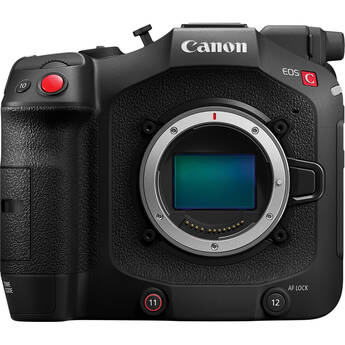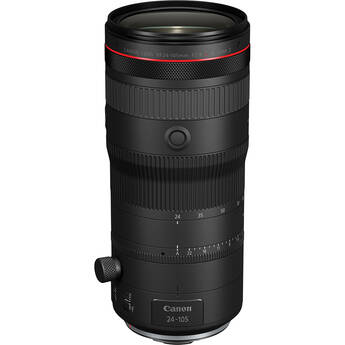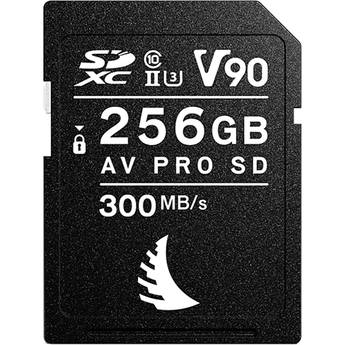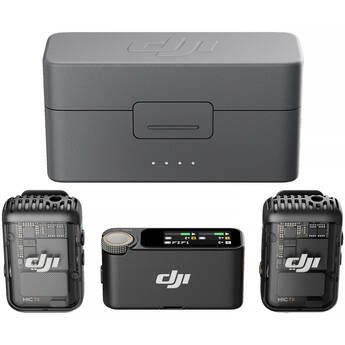Canon EOS C80 Review and Mini-Doc: Best Value-for-Money Cinema Camera Canon Has Ever Made
Restriction-free music courtesy of Epidemic Sound. Sign up here: Epidemic
The new Canon EOS C80 is the best value-for-money cinema camera Canon has introduced so far. It shares many of the specs found in the new EOS C400, like a full-frame 6K BSI sensor, triple ISO, and more. I had a chance to play with this camera for a couple of days, and I truly enjoyed using it. Before jumping into this first impression review, I encourage you to stay with me a little longer and watch a mini-documentary I filmed with this camera. I followed Tuoyu, who is a passionate photographer and food enthusiast. Additional information about the new camera can be found in our news article here.
If you are short on time, let me summarize everything I’m about to write: Canon just dropped a little bomb! Take everything you liked from the EOS C70—like its lightweight and compact design—and combine it with everything you would want to have from the EOS C400 but maybe could not afford or justify, like a full frame 6K resolution sensor, triple ISO, and newer recording formats. And here you have it: The EOS C80—the ultimate cost-effective cinema camera Canon ever produced.
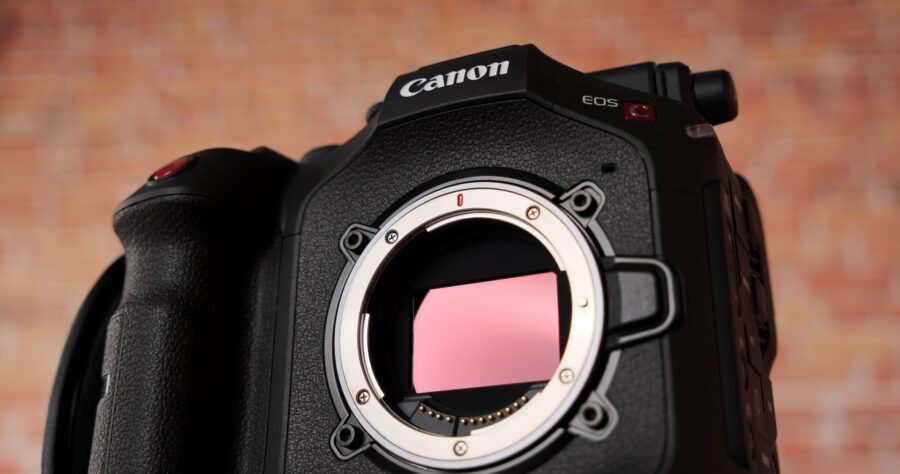
Canon EOS C400 little (big) brother/sister
Basically, it takes many of the features found in the new EOS C400, such as:
- Full frame backside illuminated sensor for providing a 6K (up to 30p) recording capability.
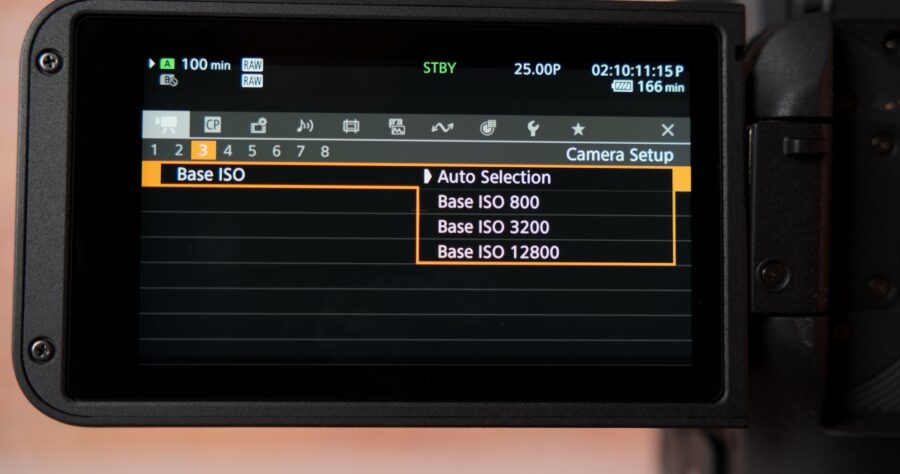
- Triple base 800/3200/12800 ISO (when filming in Canon C Log 2/3)
- A faster sensor readout for an improved rolling shutter performance. (In the mini-documentary, take a look at the shots where I’m filming Touyo on the train. Pay attention to the vertical lines outside).
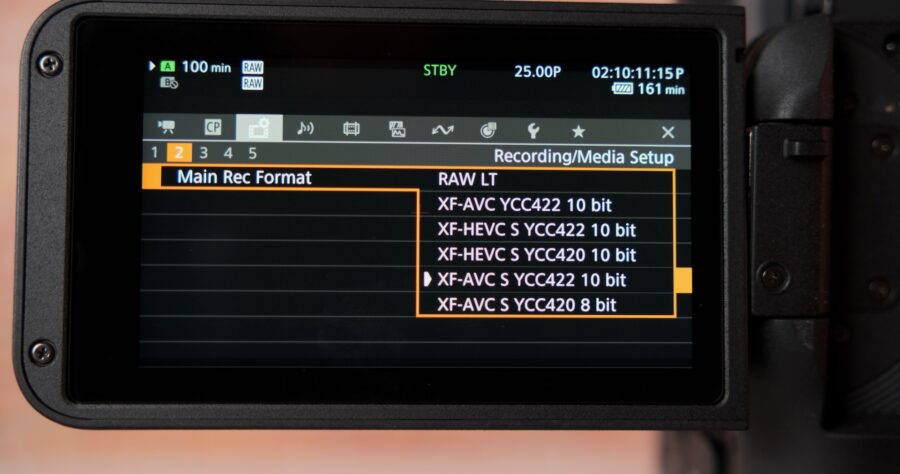
- The two new updated video file formats are also available. XF-AVC S and XF-HEVC S allow the use of a professional long file naming structure next to metadata.
Compared to the EOS C70
When compared to the EOS C70, the new EOS C80 can record internally in full frame, 12-bit Cinema RAW LT, up to 6K/30p. (Note: The EOS C70 now enjoys a hefty price drop of $1000 bringing it to $4,499)
- Looking for recording in Cinema RAW ST quality? Then switch to S35 crop mode.
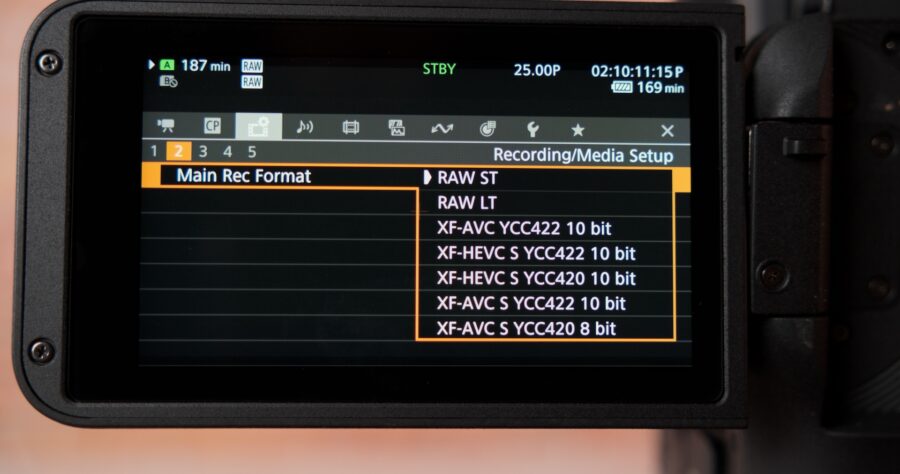
- The 4K 422 10-bit recording is oversampled from 6K.
- Needless to say, this new camera’s lowlight capabilities and auto-focus performance are similar to those of the EOS C400.
The Canon EOS C80 body design is very similar to its predecessor and retains almost the same dimensions and compactness as the EOS C70. Additionally, new features were added, such as:
- 12G SDI out terminal. (It can output simultaneously from HDMI, too.)
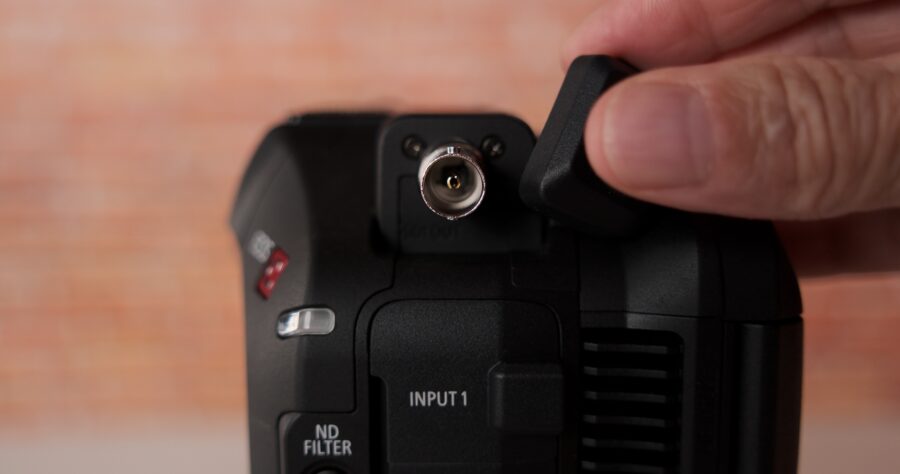
- Ethernet terminal and internal Wi-Fi for remote camera operation.
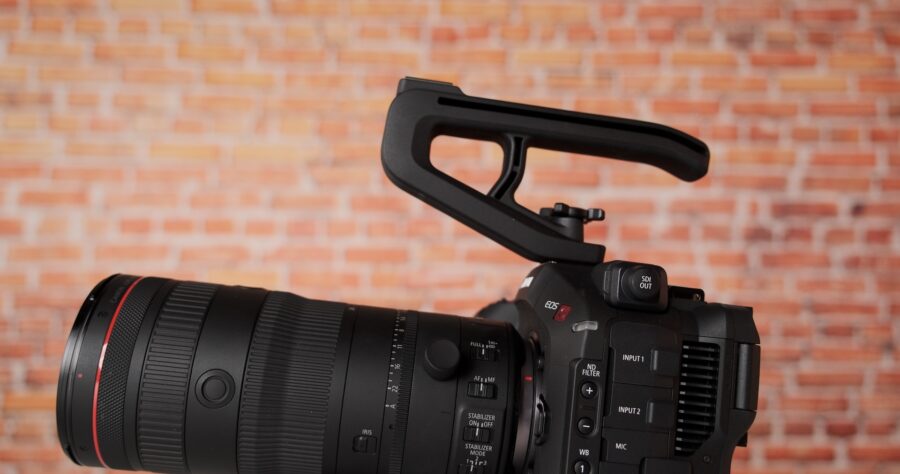
- Multi-function shoe terminal for using some third-party audio accessories. (Like the Tascam XLR Microphone Adapter, CA-XLR2d-C).
Other enhancements that I find extremely valuable are:
- An improved LCD with a greater brightness.
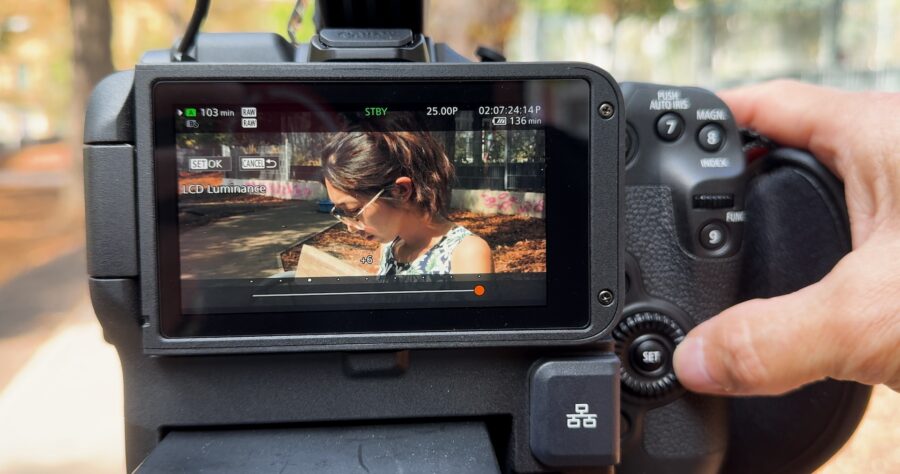
- A new LCD panel lock mechanism.
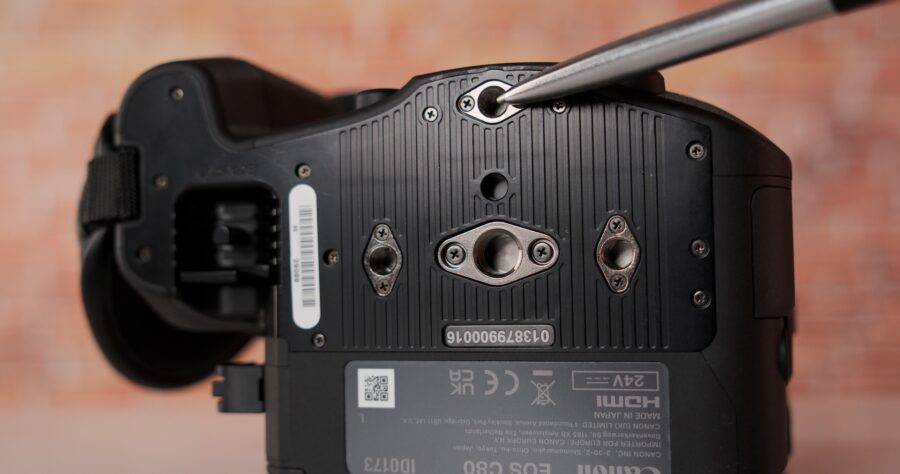
- A 1/4-inch hole is added, too, to secure the tripod plate more firmly.
- Redesigned top handle that enables the multi-function shoe functionality.
- Even the joystick has undergone a slight adjustment and is now positioned closer to the thumb for easier operation.
Autofocus and recording media
When it comes to autofocus, the dual-pixel CMOS AF II continues to shine, this time with added animal and full-body detection. In fact, in the above video, I used autofocus 95% of the time and moved to manual focus only in “difficult” situations (flat surfaces like when filming a book, for example).
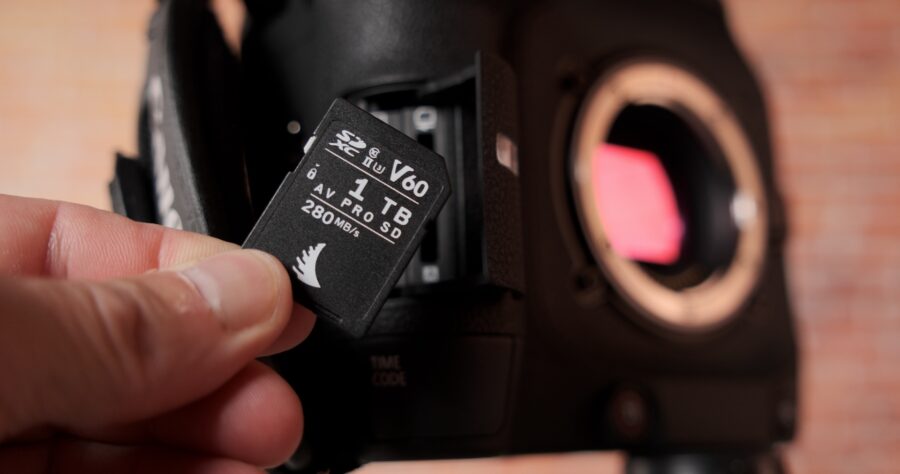
Interestingly, but not surprisingly, Canon decided to keep using SD media cards in this camera. If you are into internal RAW recording, the company recommends using V90 cards.
On my shooting day, I was using an Angelbird V60 card which held up admirably most of the time, BUT for continuous recording next to high frame rate filming, please use V90 cards for your peace of mind.
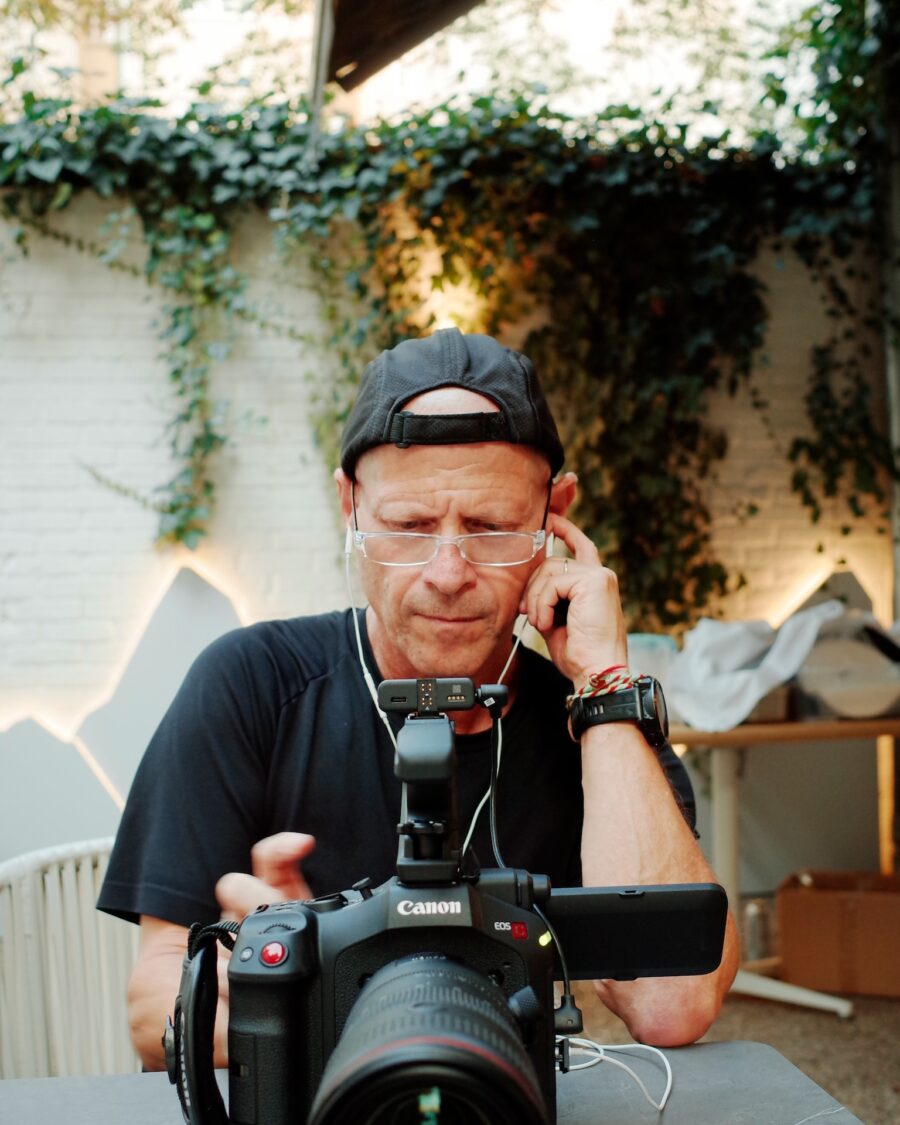
Overall handling
If you are used to working with the EOS C70, you will feel right at home. If you are used to working with Canon cameras in general, you will feel very comfortable, of course.
Nothing really interrupted me from successfully concluding the day-and-a-half shooting days I had with Tuoyo. Everything fell into place nicely. As a long advocate of working with an EVF, I had to get used to working with the LCD. Not so easy if you are wearing reading glasses, but as this camera is being categorized as a “cinema camera,” I tend to understand why Canon is not adding an EVF to it.
It is worth noting that, like the EOS C70, the new camera has only a digital stabilization function, but obviously, this cannot be used when filming in RAW recording mode.
I also “chose” to work with the only RF lens we currently have at the office, the 24-105mm f2.8. It makes the package a bit larger but is very capable in terms of image quality.
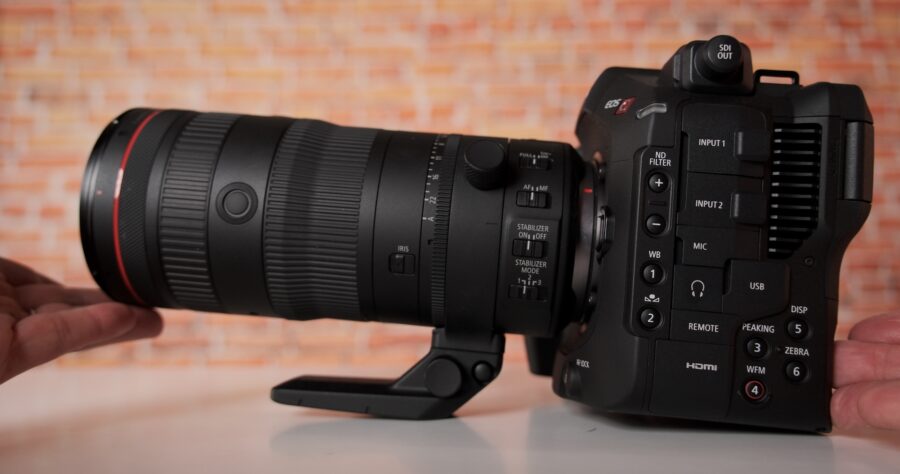
What I struggled with most was getting Adobe Premiere (latest edition) to recognize the C-Log 3 files correctly. When importing the RAW footage to Premiere, the default is always C-Log 2 (Why? A good question)…So, in order to change this setting to C-Log 3 on multiple clips, one needs to create and save a new “present.” Sounds easy, no? Bottom line, at least on my computer, using the save “C.Log 3 preset” did nothing and I needed to correct each clip in the above video manually.
Other possible applications
It’s worth mentioning that the new camera is also suited for VR content creation in addition to virtual, VFX, and live productions, but it is beyond the scope of this review to discuss all those enhancements.
Pricing against the competition
I would like to compare the price of the EOS C80 to two cameras. One is Canon’s own EOS 400 as there is some overlap between them, while the EOS C80 will retail for $5,499 the EOS C400 will set you back for $7,999. So basically, one will have to decide if the added features in the EOS C400 justify the $2,500 price difference.
Another camera that got A LOT of attention after its recent price slash is the RED Komodo X. And again, those who were considering purchasing the Komodo X might recalculate their steps. Each camera has its strengths and weaknesses, but the $1496 cheaper price tag on the EOS C80 might make the decision for some a bit easier.
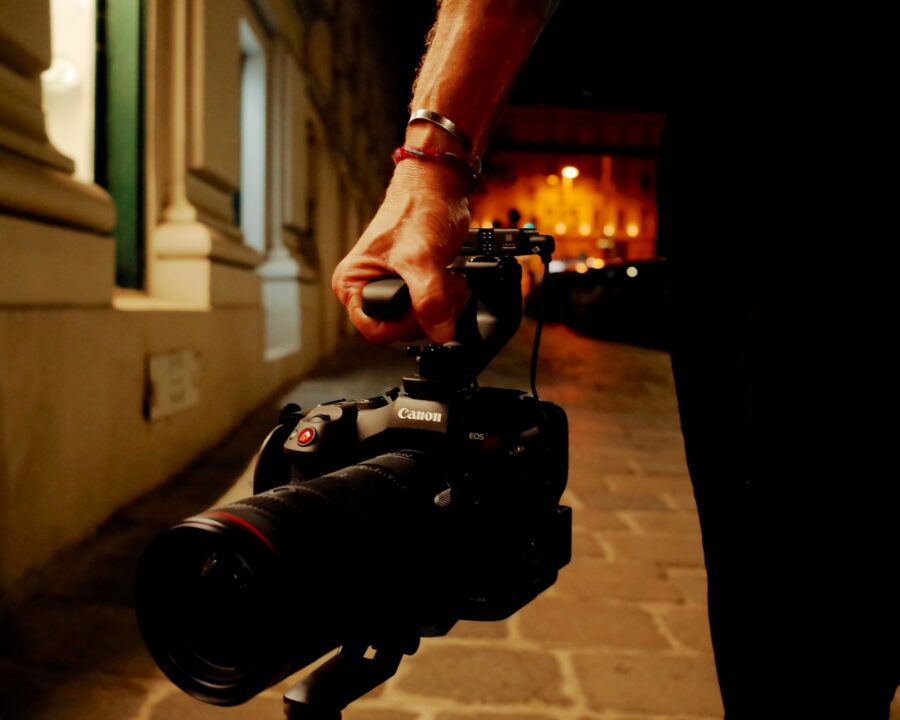
Conclusion
Canon did their homework, and it’s nice to see that they are keeping the same price policy that they started with the launch of the EOS C400, meaning, releasing modern, capable cameras at a very attractive price point. The EOS C80 is simply a great value-for-money camera by Canon, especially if you care about full-frame sensor size and 6K resolution.
Acknowledgments
I would like to thank the very talented and enthusiastic Tuoyu Song (宋拓宇) for being patient with me. We managed to nail this story in one and a half shooting days. More about her work can be found here.
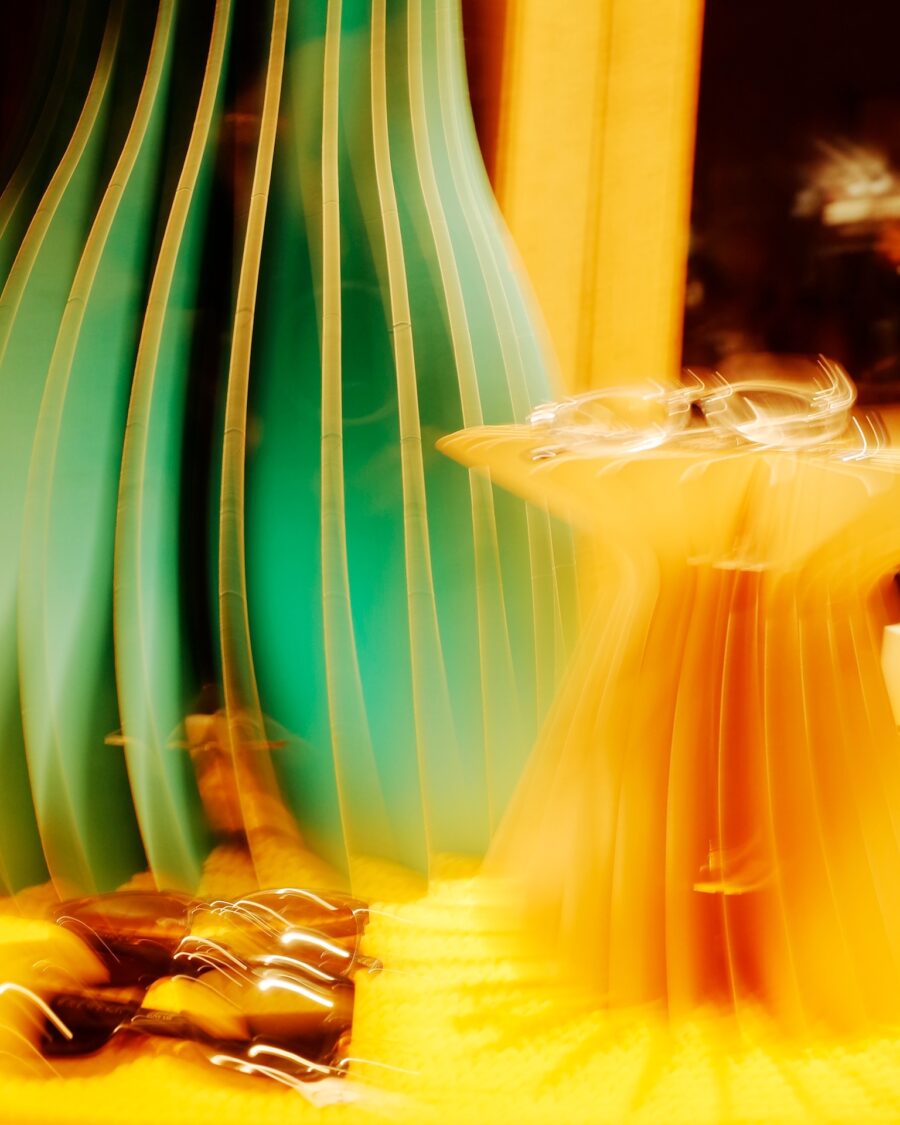
The above short film was recorded in C log3, full fame 6K/25p, Cinema RAW LT, and graded with a LUT made with fylm.ai. (Try it here). Lens: Canon RF 24-105mm f/2.8 L IS USM Z. Mic: DJI Mic 2. Light: SIRUI C150X 150W Pocket Light.
I’m curious to hear your thoughts on the new Canon EOS C80. Would you consider getting it instead of the EOS C400 or RED Komodo X? Please share your thoughts with us in the comment section below.
